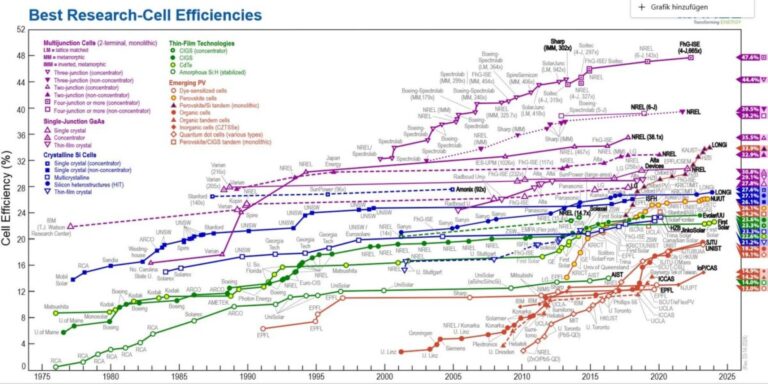The U.S. Department of Energy’s National Renewable Energy Laboratory (NREL) has updated its data Best Research Cell Efficiency Chart with the addition of a new cell category: hybrid tandems.
“Record tandem cells with layers composed of two different PV materials have been collected in this category. Some subcategories of hybrid tandems (Perovskite/Si and Perovskite/CIGS) were already present in the previous format under ‘Emerging PV’, while others (III-V/Si and Perovskite/Organic) are new,” the research institute said in a statement . “All of these subcategories have been moved to the new Hybrid Tandems category, with the exception of perovskite/perovskite tandems, which are listed under Emerging PV.”
The NREL emphasized that all these changes are now reflected in the interactive graph. The tool highlights the highest confirmed conversion efficiency of research cells for a range of PV technologies.
“Everything until the end of 2023 is included,” a spokesperson for the research institute recently said pv magazinenoting that the chart also includes key results achieved in the first quarter of this year.
The chart now includes the world record efficiency of 33.9% achieved in November by Chinese manufacturer Longi for a perovskite-silicon tandem solar cell and the 27.09% efficiency achieved by the same company for a heterojunction back contact solar cell. In addition, it includes the 23.64% efficiency achieved in March by US thin-film module manufacturer First Solar for a solar cell based on copper, indium, gallium and diselenide technology (CIGS).
This content is copyrighted and may not be reused. If you would like to collaborate with us and reuse some of our content, please contact: editors@pv-magazine.com.


